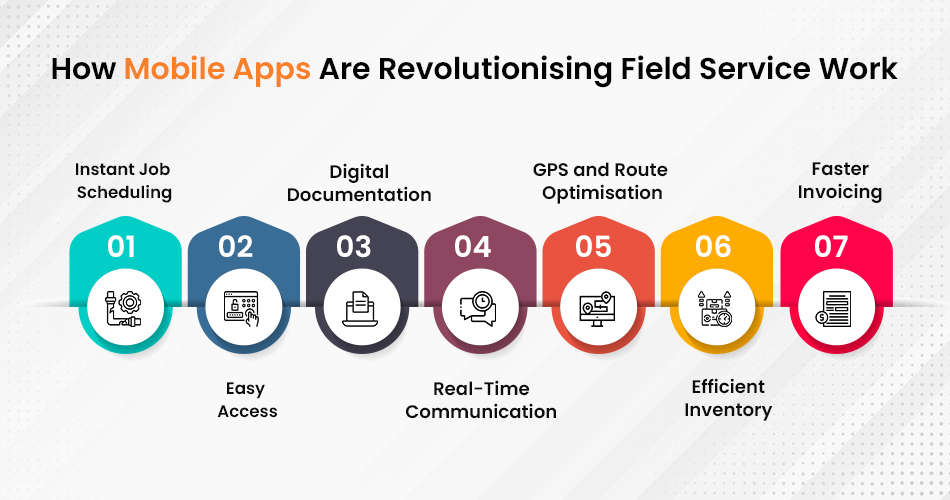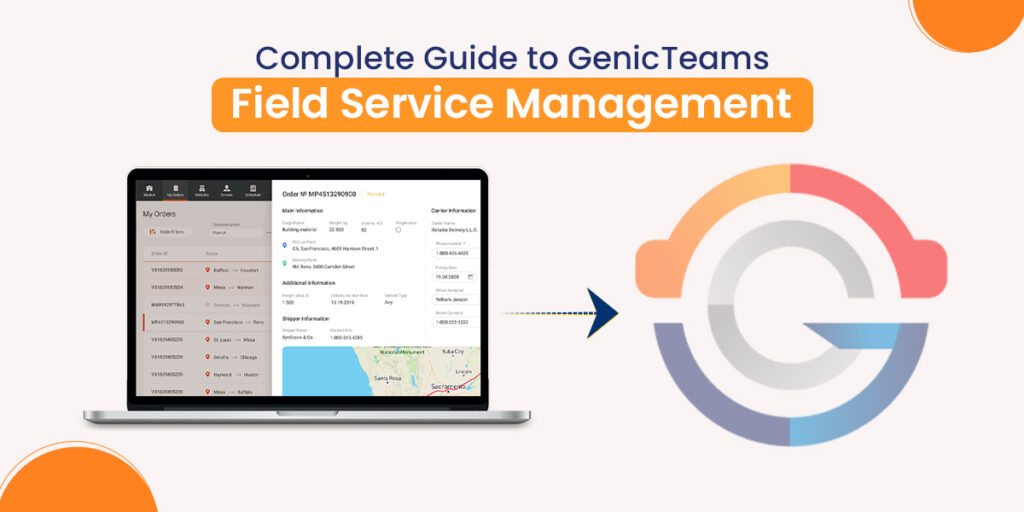Field service work has always been challenging. Technicians must juggle multiple tasks, travel between job sites, and ensure customers receive high-quality service. In the past, field technicians relied on paper forms, manual scheduling, and phone calls to stay updated. These methods were slow, inefficient, and prone to errors.
Technology has changed the game. The introduction of field service management apps has transformed how technicians work. Mobile apps now streamline scheduling, improve communication, and provide instant access to job details.
In this blog, we’ll explore why mobile apps are essential for field service technicians, how they solve common challenges, and why businesses must invest in them.
The Common Challenges in Field Service Work
Before mobile apps, field service work was full of inefficiencies. Technicians faced several obstacles that made their jobs harder and slowed down operations.
1. Delays Due to Manual Scheduling
Dispatchers assigned jobs using paper schedules, spreadsheets, or phone calls. This led to:
- Miscommunication and scheduling conflicts
- Technicians travelling to the wrong locations
- Delays in responding to urgent service requests
A field service management app solves this by allowing real-time job scheduling and automatic notifications to technicians.
2. Limited Access to Job Information
Technicians often arrived at job sites without proper information. They had to call the office to check customer history, equipment details, or service records. This caused delays and frustration.
A mobile app gives technicians instant access to:
- Customer history
- Equipment manuals
- Previous service records
- Job instructions
This ensures they are fully prepared before reaching the job site.
3. Excessive Paperwork
Paper-based processes slowed down work and increased the risk of lost or incomplete information. Filling out forms by hand, getting customer signatures, and submitting reports were time-consuming.
With a mobile app, technicians can:
- Complete digital forms
- Capture customer signatures on-site
- Submit job reports instantly
This saves time and ensures accurate documentation.
4. Poor Communication Between Teams
Technicians had to rely on phone calls, texts, or emails to communicate with dispatchers and colleagues. This led to:
- Missed messages
- Slow response times
- Misunderstandings about job details
A field service management app allows seamless communication. Technicians can receive job updates, send messages, and even share photos in real-time.
How Mobile Apps Are Revolutionising Field Service Work

1. Instant Job Scheduling and Updates
A mobile app eliminates the need for phone calls and paper-based scheduling. Dispatchers can assign jobs with a few taps, and technicians receive instant notifications on their phones or tablets.
Key benefits:
- Faster response times
- Reduced scheduling conflicts
- Real-time updates on job changes
Technicians always know where to go and what to do next.
2. Easy Access to Job and Customer Details
Arriving at a job site without full details can slow down work. With a mobile app, technicians can:
- Check customer history before the visit
- Access work orders and instructions
- View past service records and notes
This improves efficiency and ensures better service quality.
3. Digital Documentation and Paperless Workflow
Technicians no longer need to fill out paper forms or store physical documents. Mobile apps enable:
- Digital job reports
- Electronic signatures from customers
- Automated data syncing with office systems
This reduces paperwork and speeds up job completion.
4. Real-Time Communication With Teams and Customers
A mobile app improves communication by allowing instant messaging, job status updates, and alerts. Technicians can:
- Contact dispatchers for support
- Share photos and notes about issues
- Update job progress in real time
This keeps everyone on the same page and reduces delays.
5. GPS and Route Optimisation for Faster Travel
Travelling between job sites can be time-consuming, especially in busy areas. A field service management app includes GPS tracking and route optimisation to:
- Reduce travel time
- Lower fuel costs
- Improve punctuality
Technicians reach their destinations faster, allowing them to complete more jobs each day.
6. Efficient Inventory and Parts Management
Running out of essential parts in the middle of a job can be frustrating. A mobile app helps technicians track inventory levels and request new parts before they run out.
Key advantages:
- Instant access to inventory data
- Easy ordering of replacement parts
- Fewer delays due to missing equipment
Technicians always have what they need to complete jobs on time.
7. Faster Invoicing and Payment Processing
Paper-based invoicing often causes delays in payment collection. With a mobile app, technicians can:
- Generate invoices instantly
- Accept payments on-site
- Reduce errors in billing
This speeds up cash flow and improves customer satisfaction.
How Mobile Apps Improve Customer Satisfaction
A smooth field service experience leads to happier customers. Here’s how mobile apps help:
1. Faster Response Times
Customers don’t like waiting. With real-time job scheduling, technicians reach customers quicker and resolve issues faster.
2. More Accurate Service
With access to customer history and past work records, technicians can provide better, more informed service.
3. Transparent Communication
Customers appreciate updates on technician arrival times and job progress. Mobile apps allow businesses to keep customers informed every step of the way.
4. Digital Invoices and Payment Convenience
Customers can sign off on completed work digitally and pay instantly using mobile payment options. This makes transactions smooth and hassle-free.
Satisfied customers are more likely to recommend a business and become repeat clients.
The Business Benefits of Using a Field Service Management App
Field service businesses’ mobile app benefits for field technicians significantly from mobile technology. Some key advantages include:
- Increased efficiency – Technicians complete jobs faster with real-time updates and digital documentation.
- Lower operational costs – Less paperwork, optimised travel routes, and better inventory management reduce unnecessary expenses.
- Higher revenue – Faster invoicing and payment collection improve cash flow.
- Better employee productivity – Technicians spend less time on admin tasks and more time doing actual work.
- Stronger customer relationships – Businesses that provide quick, reliable service gain loyal customers.
Investing in a field service management app is a smart move for any business looking to improve efficiency and service quality.
Key Takeaways
Mobile apps eliminate delays caused by manual scheduling
- Technicians get instant access to job details and service history
- Digital documentation reduces paperwork and errors
- Real-time communication improves teamwork and response times
- GPS tracking helps technicians reach job sites faster
- Inventory tracking ensures technicians have the right parts
- Instant invoicing speeds up payments
- Better service leads to happier customers and repeat business
Final Thoughts
A field service management app is no longer an optional tool—it’s a necessity. Businesses that invest in mobile technology see major improvements in efficiency, communication, and customer satisfaction.
If your business still relies on manual processes, now is the time to switch to a mobile-first approach. Your technicians will work more efficiently, your customers will be happier, and your business will grow faster.
Are you ready to take your field service operations to the next level? Start using a mobile app today!









